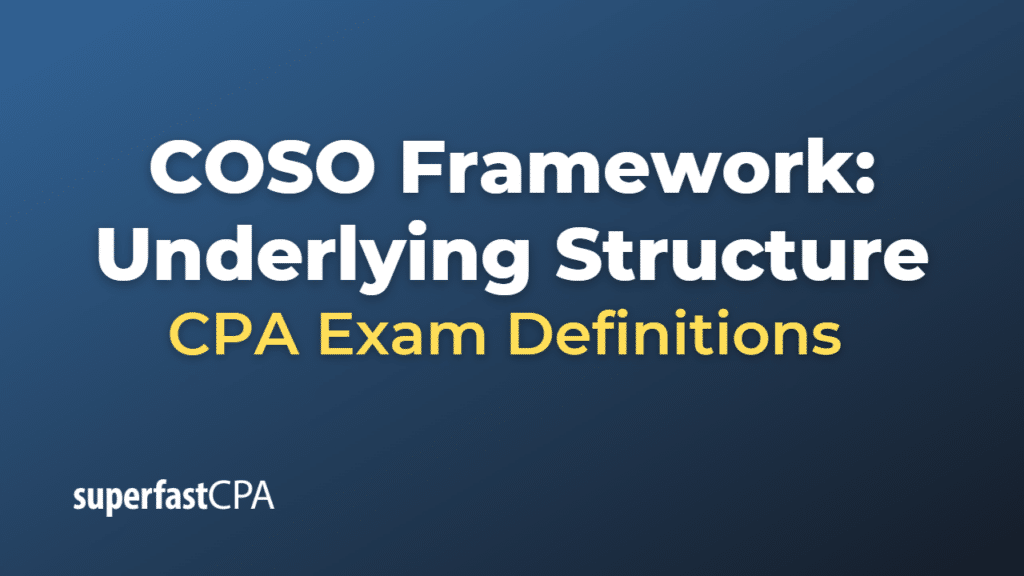COSO Framework: Underlying Structure
The underlying structure of the COSO Internal Control Framework consists of five interrelated components that work together to create an effective internal control system. These components are supported by principles and concepts that provide guidance for designing, implementing, and evaluating internal control within an organization.
The five components of the COSO framework are:
- Control Environment: The control environment sets the tone for the organization and forms the foundation for all other components of internal control. It includes factors such as the organization’s ethical values, governance structure, management philosophy, organizational structure, and commitment to competence. The control environment influences the overall culture and functioning of internal control within the organization.
- Risk Assessment: Risk assessment is the process of identifying, analyzing, and managing risks that may prevent the organization from achieving its objectives. This includes evaluating the likelihood and impact of potential risks, considering changes in the internal and external environment, and establishing risk tolerances. Risk assessment helps organizations prioritize and focus their efforts on the most significant risks and design appropriate control activities to address those risks.
- Control Activities: Control activities are the specific policies, procedures, and mechanisms put in place to mitigate identified risks and ensure the organization’s objectives are met. These activities can be preventive or detective in nature and can be applied at various levels within the organization. Control activities include authorizations, approvals, reconciliations, physical controls, segregation of duties, and information technology controls, among others.
- Information and Communication: Information and communication involve the processes and systems used to generate, capture, and communicate relevant and timely information, both internally and externally. Effective information and communication systems enable employees to understand their roles and responsibilities, provide feedback on the effectiveness of internal control, and facilitate informed decision-making. This component also includes external communication with stakeholders, such as regulators, investors, and customers.
- Monitoring: Monitoring involves ongoing or periodic assessments of the effectiveness of the internal control system. This includes evaluating the design and operation of controls, identifying and addressing potential weaknesses or deficiencies, and providing feedback to management for improvement. Monitoring can be conducted through ongoing activities, separate evaluations, or a combination of both.
The COSO Internal Control Framework is designed to be flexible and adaptable to the unique needs and characteristics of individual organizations. By incorporating the five components into their internal control systems, organizations can enhance their ability to manage risks, achieve their objectives, and maintain a strong control environment.













